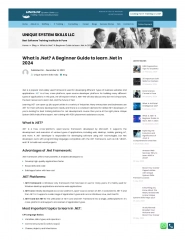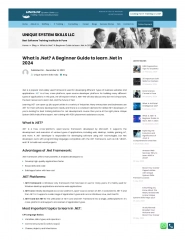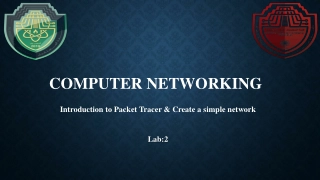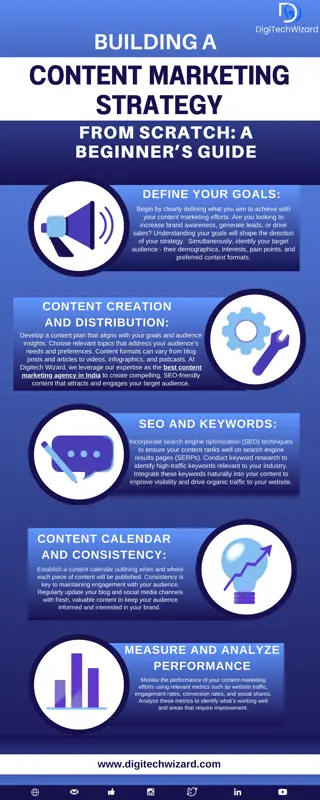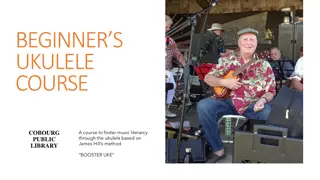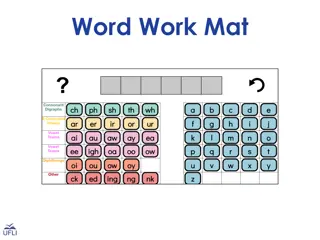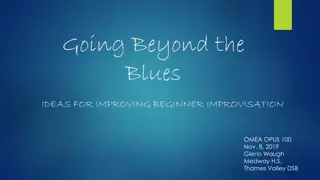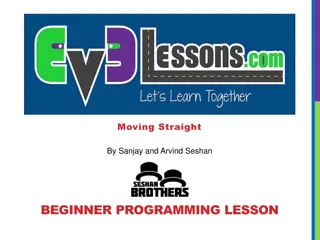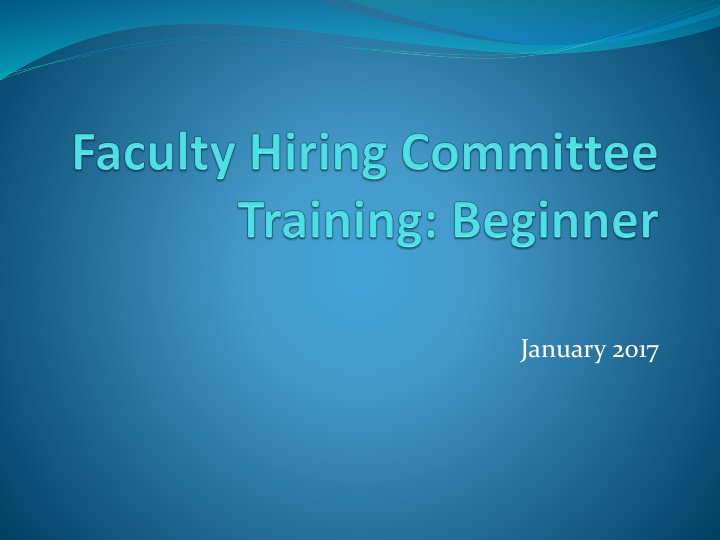
Equal Opportunity Employment Laws
Discover the importance of Federal and state EEO laws, the benefits of workforce diversity, bias elimination in hiring decisions, best practices for recruitment, and the significance of nondiscrimination laws such as Title VII of the Civil Rights Act of 1964. Learn about the promotion of inclusion and the prohibition of discrimination in the workplace through various legal frameworks.
Download Presentation

Please find below an Image/Link to download the presentation.
The content on the website is provided AS IS for your information and personal use only. It may not be sold, licensed, or shared on other websites without obtaining consent from the author. If you encounter any issues during the download, it is possible that the publisher has removed the file from their server.
You are allowed to download the files provided on this website for personal or commercial use, subject to the condition that they are used lawfully. All files are the property of their respective owners.
The content on the website is provided AS IS for your information and personal use only. It may not be sold, licensed, or shared on other websites without obtaining consent from the author.
E N D
Presentation Transcript
Todays Agenda Federal and state EEO laws, including Title 5 Educational benefits of workforce diversity Elimination of bias in hiring decisions Best practices in serving on a screening/interview committee Discuss logistics of recruiting process Review committee decisions and next steps
Non-Whites* Percentages by Student and Employee Types Fall Terms 2005 2014 80% 70% 60% 50% Students 40% Classified Administrator 30% Tenured/Tenure Track Academic, Temporary 20% 10% 0% Fall 2005Fall 2006Fall 2007Fall 2008Fall 2009Fall 2010Fall 2011Fall 2012Fall 2013Fall 2014 * Non-White: Asian, Black, Hispanic, Native American, and Pacific Islander & multipleethnicities White: White and unreported
MiraCostas Non-Whites* Percentages by Student and Employee Types Fall Terms 2009 2016 60% 54% 50% 41% 40% 39% 34% 30% 29% 20% 10% 0% Fall 2009 Fall 2010 Fall 2011 Fall 2012 Fall 2013 Fall 2014 Fall 2015 Fall 2016 Administrators Full-Time Faculty Classified Associate Faculty Students
Equal Opportunity Employment Laws
Two Sides of the Same Coin Nondiscrimination Laws Prohibit Discrimination EEO Laws Promote Inclusion
Federal Nondiscrimination Laws A sample of Federal nondiscrimination laws: oThe Civil Rights Act of 1964 (Title VII) oThe Age Discrimination in Employment Act of 1967 (ADEA) oAmericans with Disabilities Act of 1990 (ADA)
The Civil Rights Act of 1964 (Title VII) Title VII prohibits not only intentional discrimination, but also practices that have the effect of discriminating against individuals because of their race, color, national origin, religion, or sex. It is illegal to discriminate in any aspect of employment, including decisions based on stereotypes or assumptions about the abilities, traits, or performance of individuals of a certain sex, race, age, religion, or ethnic group, or individuals with disabilities.
The Age Discrimination in Employment Act of 1967 (ADEA) Age discrimination involves treating someone (an applicant or employee) less favorably because of his or her age. The Age Discrimination in Employment Act (ADEA) forbids age discrimination against people who are age 40 or older. The law forbids discrimination when it comes to any aspect of employment, including hiring, firing, pay, job assignments, promotions, layoff, training, fringe benefits, and any other term or condition of employment.
Americans with Disabilities Act of 1990 (ADA) The ADA prohibits discrimination on the basis of disability in all employment practices. Employer may not ask applicants about the existence, nature, or severity of a disability, but may ask about an applicant s ability to perform job functions. Reasonable accommodation includes modification or adjustments that enable disabled employees to perform essential job functions.
Caliornias Fair Employment and Housing Act (FEHA) FEHA bans employment discrimination based on age (40 and over), ancestry, color, religious creed, disability (mental and physical) including HIV and AIDS, marital status, medical condition, national origin, race, sex, and sexual orientation.
Nondiscrimination: Title 5 "... no person in the State of California shall, on the basis of ethnic group identification, national origin, religion, age, sex, race, color, ancestry, sexual orientation, or physical or mental disability, or on the basis of these perceived characteristics or based on association with a person or group with one or more of these actual or perceived characteristics, be unlawfully denied full and equal access to the benefits of, or be unlawfully subjected to discrimination under any program or activity that is administered by, funded directly by, or that receives any financial assistance from, the Chancellor or Board of Governors of the California Community Colleges." 59300
Laws Promoting Inclusion Education Code 87100: a work force that is continually responsive to the needs of a diverse student population [which] may be achieved by ensuring that all persons receive an equal opportunity to compete for employment and promotion within the community college districts and by eliminating barriers to equal employment opportunity.
California Title 5 53024.1: Establishing and maintaining a richlydiverse workforce is an on-going process that requires continued institutionalized effort.
Educational Benefits of Diverse Workforce
Studies prove the educational benefits of a diverse faculty. Closing achievement gaps by 20-50% Fairlie, R. W., Hoffman, F., Oreopoulos, P. (2014). A Community College Instructor Like Me: Race andEthnicity Interactions in the Classroom. American Economic Review, 104(8): 2567-2591. Full article available at: http://people.ucsc.edu/~rfairlie/papers/
For Team Effectiveness http://www.mckinsey.com/insights/organization/why_ diversity_matters
Elimination of bias in hiring decisions
Implicit bias tests Project Implicit is a non-profit organization and international collaboration between researchers who are interested in implicit social cognition - thoughts and feelings outside of conscious awareness and control. The goal of the organization is to educate the public about hidden biases and to provide a virtual laboratory for collecting data on the Internet. https://implicit.harvard.edu/implicit/takeatest.html
Best Practices in Serving on a Screening/Interview Committee
MiraCostas Equal Opportunity Employment Plan
Our goal The District s goal is a working and academic environment that is: welcoming to all fosters diversity and promotes excellence. An educational experience in an inclusive environment, best prepares our students to work and live in a global society.
Definition of diversity A condition of broad inclusion in an employment environment that offers equality and respect for all persons. A diverse educational community recognizes the educational benefits that flow from employee populations that are varied by .
Definition contd Age Ancestry Color Disability Ethnic group identification Gender (gender identity/expression) Marital status Medical condition Military status National origin Parental status Race Religion Sexual orientation
MiraCostas Divesity, Equity & Inclusion Statement MiraCosta College is committed to providing a strong, supportive, and authentic environment where difference is valued, respected, encouraged, and honored; where all faculty, staff, and students experience a sense of belonging and the freedom to express themselves; and where their experiences are recognized and valued. MiraCosta College strives to be a model for equity and inclusion. The college is committed to providing opportunities for engagement both across the campus and within the communities the college serves. The college seeks to remove barriers to learning, participation, and success, with a focus on changing procedures and practices that disproportionately affect certain groups. Anchored in a culture of evidence, MiraCosta College promotes increased awareness and appreciation of individual, collective, and intersecting identities within our diverse society and acknowledges that different students learn in different and unique ways.
Evaluation of candidates Do they understand the demographics of our student population and the unique challenges they bring to us? Can they respond effectively to issues such as academic preparation, culture, gender, race, ethnicity, sexual orientation, socioeconomic circumstances, and disability? Do they demonstrate evidence of cultural competency?
Ethnicity of full time faculty compared to credit students Fall 2016 Faculty .5% 6.8% 4.2% 17.9% 65.3% 4.2% 1.1% Students 0.3% 7.6% 3.4% 35.8% 43.7% 7.3% 2.0% Am. Ind./Alaskan Nat. Asian/Pacific Islander African American Hispanic White Multiple ethnicities Other/unknown
Develop a diversity question Samples (purple handout) Customize it to the specific work to be performed for each job. Attend flex workshop put on by Luke Lara et. al.: How to Write and Evaluate Interview Questions Wednesday, January 18th from 2-4 pm
Phase I of recruitment HR advertises the openings Chronicle of Higher Education Local newspapers Discipline-specific publications, websites and organizations Committee and department members recruit Make contact with graduate programs and tap into specific networks, especialy equity-focused like Puente
Phase II of recruitment Your help getting the word out is vital! Where are the best graduate schools in your field? Contact them! See list of top 10 schools with diverse degree recipients Email announcements to your alma mater and classmates from graduate school. Don t be shy ask!
Guide to Faculty Employment Policy and Hiring Procedures Role of chair, committee members and Equal Employment Opportunity (EEO) Representative Confidentiality of process is paramount!
Forms to assist you Interview Summary Form Interview Activities
Steps in the process How closing dates established HR processing Application screening Rotational reading takes extra week Committee interviews Final interviews Reference checking Offers/Rejections
Closing Dates Biology Biomanufacturing Business, Statistics Chemistry Counselor Counselor, SSSP (3) Counselor, Veterans Feb 14 March 28 March 28 Feb 21 March 7 Feb 28 March 14
Closing Dates contd English, Transfer (2) English, Developmental Librarian Math Math, Basic Skills Mental Health Counselor Noncredit ESL Nursing Feb 14 Feb 21 Feb 28 Feb 21 Feb 14 Feb 28 March 14 Feb 21
Job Fair: Who will attend job fairs? Los Angeles - January 28 San Francisco February 4 Diversity budget #: 11-521100-851-00000-6761-1612 If no committee member attends HR will need talking points
Committees need to decide: Screening criteria Interview questions Letters of reference Whether to allow from members of committee Out of state candidates Final interviews for true finalists only? all?
Committees need to decide: Writing sample Candidate identified or not? Length of time allowed? Before or after interviews? Teaching demonstration Exact wording of instructions? Length of time allowed? Any special equipment needed?
Next steps for committee Screening criteria 1) 2) Interview questions
Screening Criteria Must be created directly from the job announcement. Must be directly related to the essential education, ability or knowledge required Must be measurable by the contents of the application materials Commitment to diversity
New Diversity Question MiraCosta College is an Equal Opportunity Employer with a commitment to diversity. We strive to be a model for equity and inclusion, effectively supporting students from diverse socioeconomic and cultural backgrounds who possess a range of abilities, academic preparation, and life experiences. Please describe what qualifications and/or experiences have prepared you to contribute to the fulfillment of the College s goals for equity and inclusion
Agree on what youre looking for Committee should discuss the traits a successful candidate should possess. Discuss the knowledge, skills and abilities that would result in superior performance in that position.
Follow up questions Allowed if information is critical for committee to make best hiring decision MUST be both: Job related Non-discriminatory
Prior knowledge Dealing with candidates known to committee member(s) First hand information Job related Can be shared at any time in the process Decision about impact of that information is based on consensus of entire committee, not just that individual
Associate Faculty candidates If meet minimum qualifications and have a complete application packet, MUST be granted an interview if ranked in top 10
Equivalency Process Must give same consideration as all other applications Equivalency committee considers request and forwards to ASC Senate Council confirms Interviews can take place Board of Trustees considers with hiring recommendation
Letters of Recommendation We are once again using the process that allows for letter writers to submit a letter which the candidate cannot view. HR will not remove any extra letters submitted and will only screen based on the minimum number of letters requested


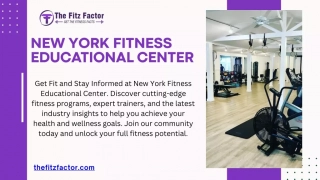
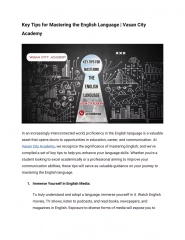
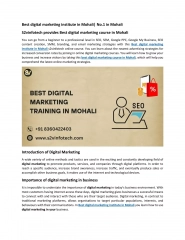
![[PDF⚡READ❤ONLINE] Zen Mind, Beginner's Mind: 50th Anniversary Edition](/thumb/20459/pdf-read-online-zen-mind-beginner-s-mind-50th-anniversary-edition.jpg)
